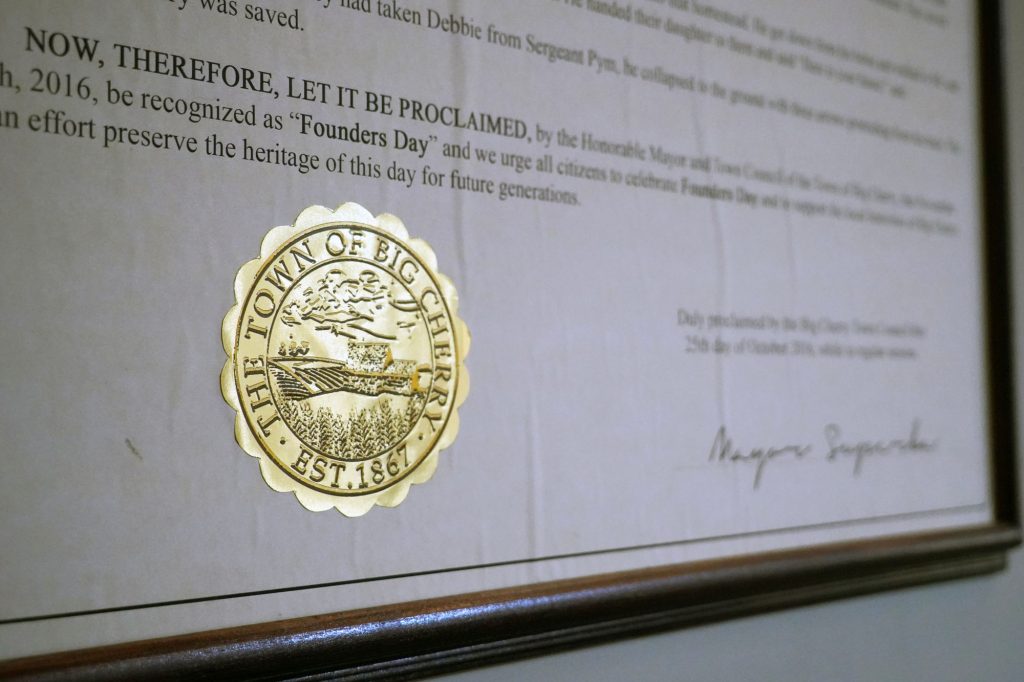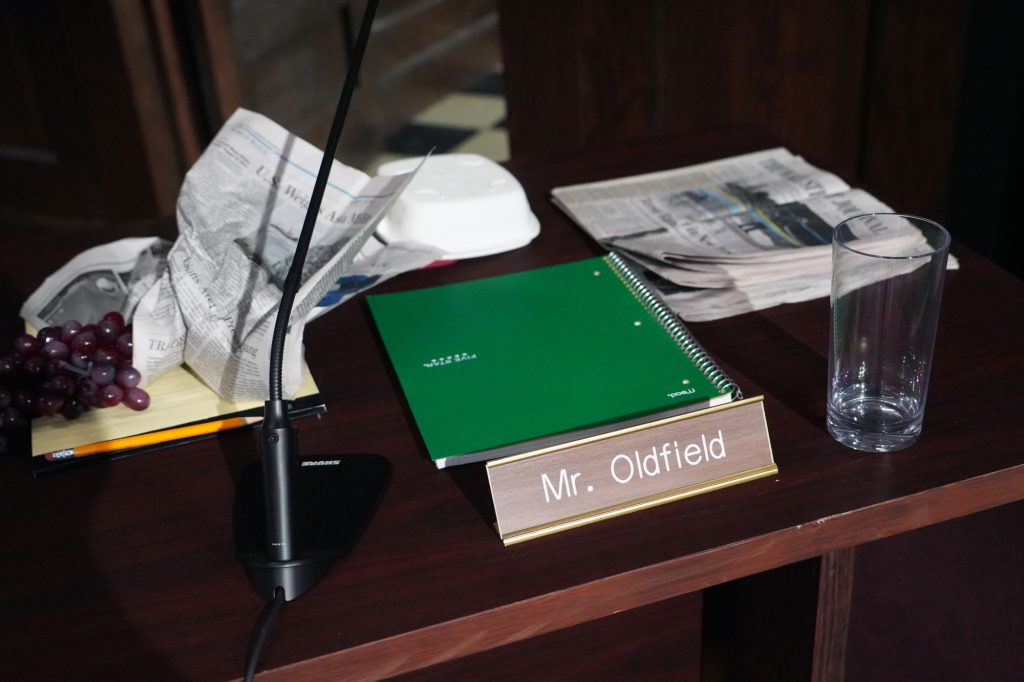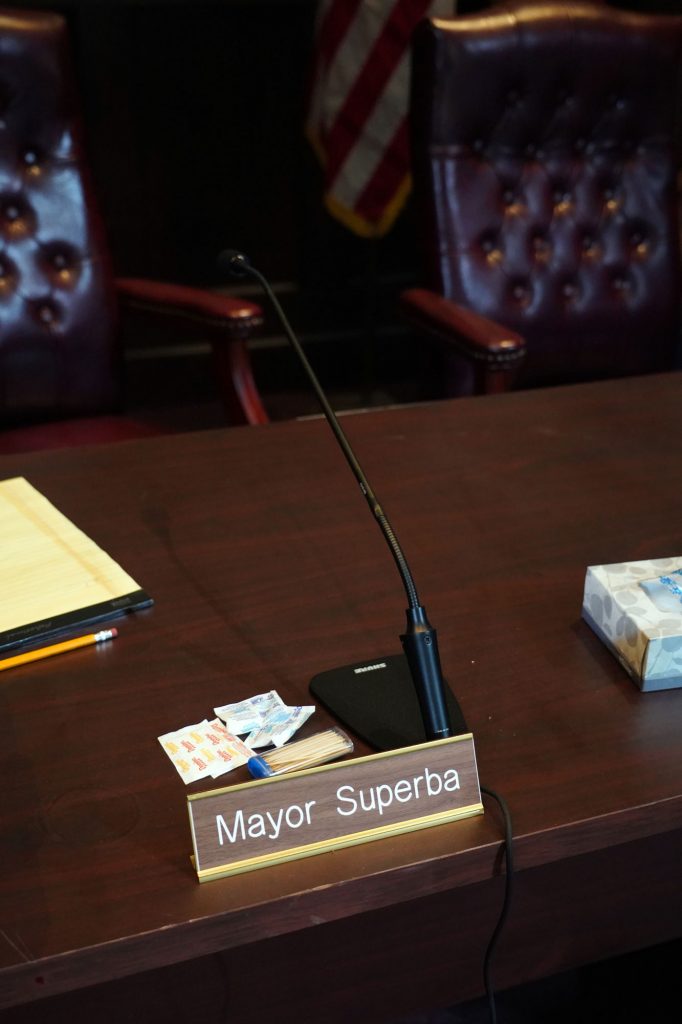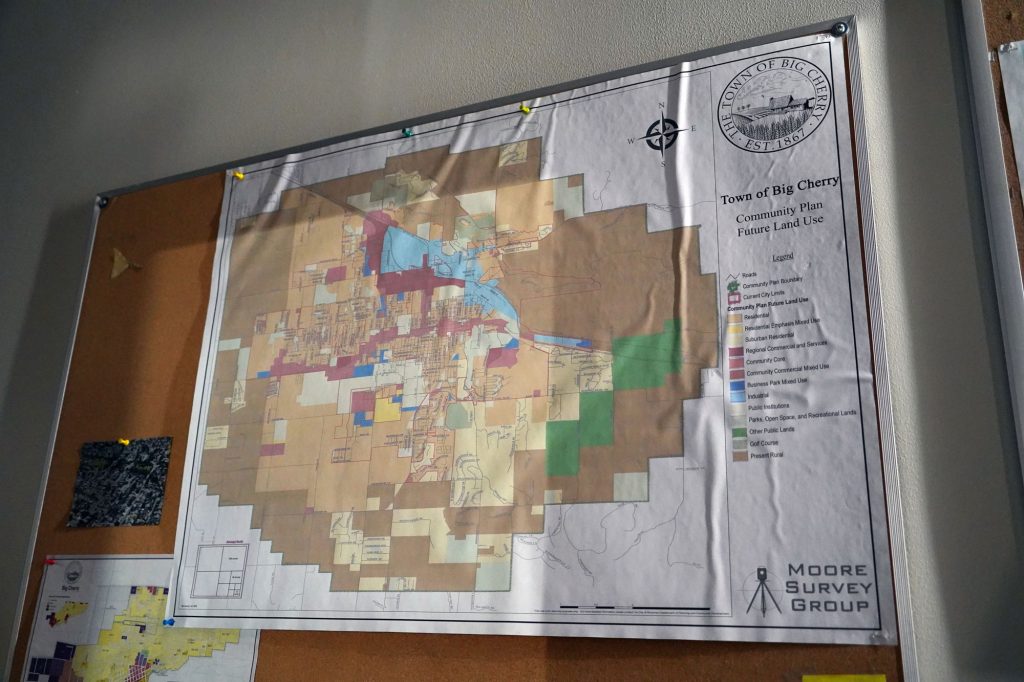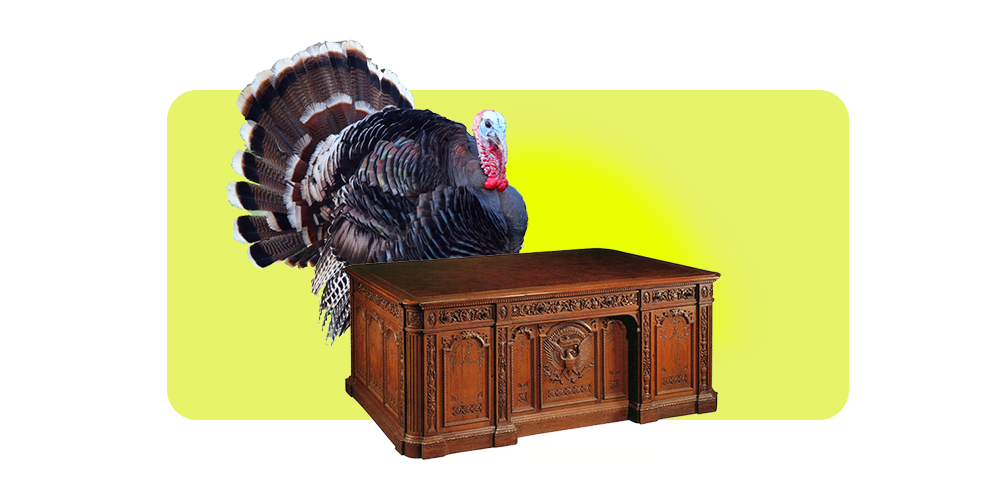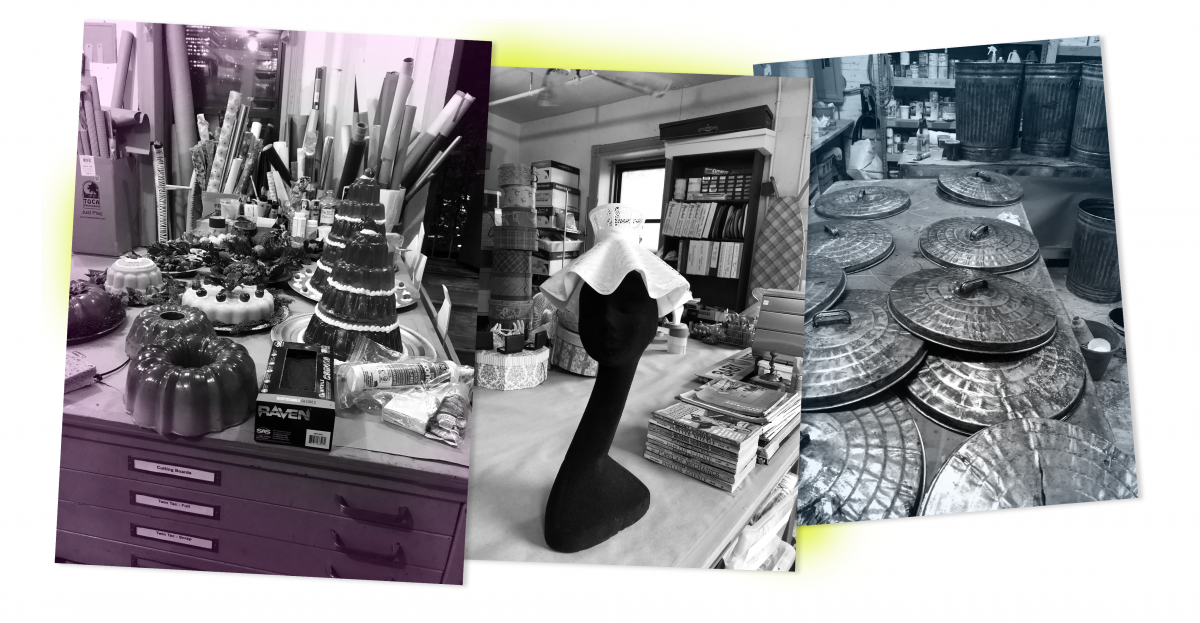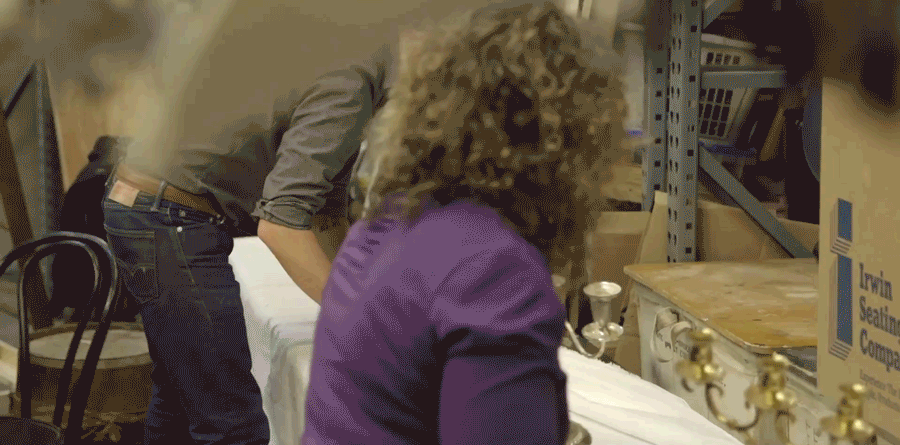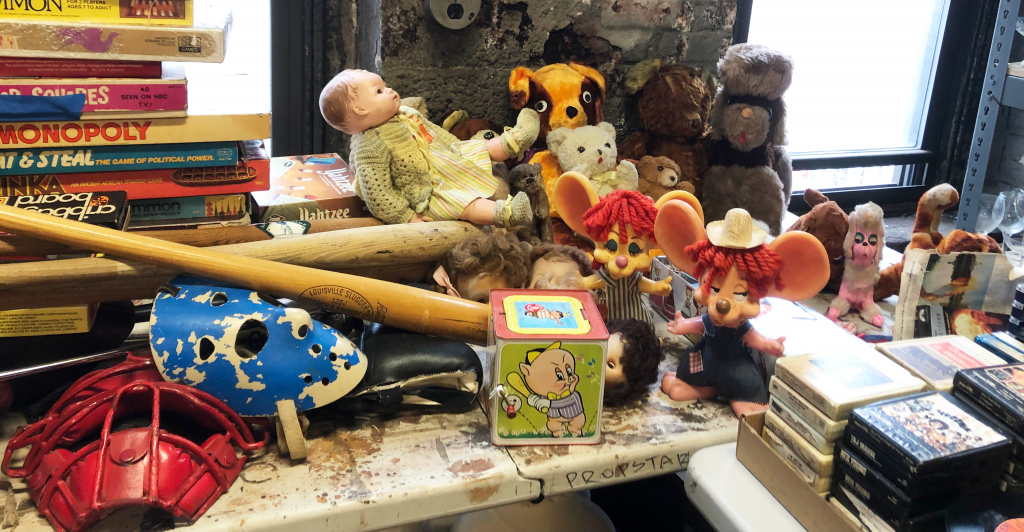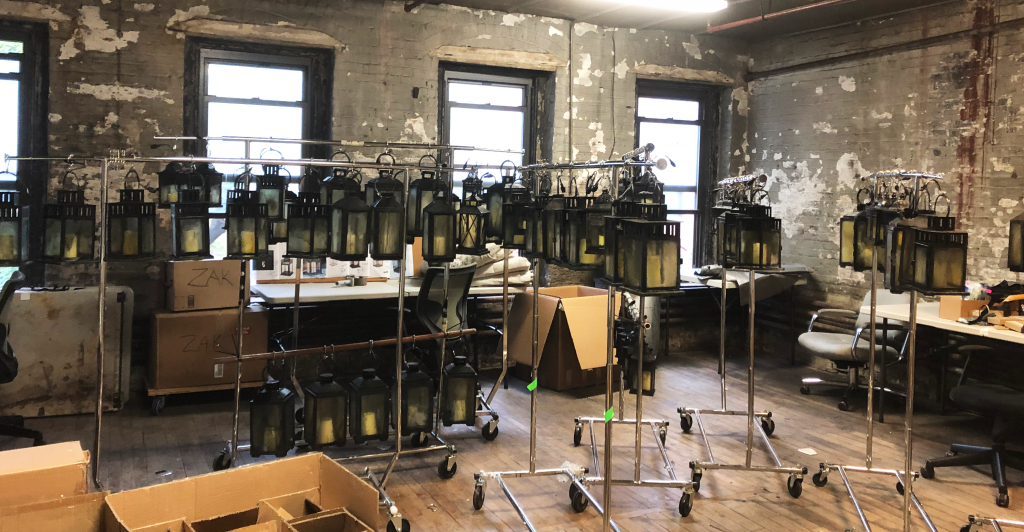Exclusive excerpts from Talking Turkey: The Wit and Wisdom of President Charles H.P. Smith. For one night only, tune in on Thursday, May 7, 2020 at 8pm ET to see President Smith (John Malkovich) and two key members of his campaign team, Clarice Bernstein (Patti LuPone) and Archer Brown (Dylan Baker) tackle major American concerns just days before the upcoming Presidential election. To quote one of President Smith’s most famous lines: “I always felt I’d do something memorable… I just assumed it’d be getting impeached.”
THE ELECTORAL SEASON
My opponents are yapping at my heels.
I have been asked if I wish them ill.
No, I do not wish them ill. If I wished them ill I would withdraw from the race. For this job, finally, is an unmitigated pain in the ass.
Yes, there are moments of reward – as when the Press goes home, or I can just sit back on Air Force One and tell racist jokes; but, by and large, the job is a never ending grind, with little to look forward to but the hundreds of millions of dollars my supporters will be called upon to cough up when I have left office.
Let me serve notice on them now: you may call it “directorships,” or “Charitable Institutions,” or stock tips, or the “loan” of your beach house, but, friends, I did my part and you’re going to do yours.
And, should one of my opponents prove successful come November, I say to them what the aged parents say to those with a newborn: “Ha Ha – you’re in for it now!”
God bless the United States.
Charles H.P. Smith
ON THE SUBJECT OF THE CONSTITUTION
The constitution is one of the foundation documents of this great country. No, it is not written on stone, it is written on parchment or the skins of some animal which, though perhaps endangered now, was, at the time of its composition, perfectly disposed to have its skin written on.
Is this different than tattooing? Yes and no.
Tattooing is a custom brought to thee shores by those intrepid mariners who first ventured to the great south seas, bringing syphilis and bringing back coral, pineapples, and those cunning print shirts so popular during the summer months. Tattooing is also used, as we know, in identification of the lips of horses, poodles, and other beasts both of burden and enjoyment. These tattoos identify the animals, should they be lost or stolen. So the next time you see an ownerless horse, thank those visionaries who drafted that compact which keeps us safe and secure: your constitution.
Sincerely,
Charles H.P. Smith, President of the United States
MY MILITARY SERVICE
Military Service, as I understand it, means nothing more and certainly nothing less than service in those branches of the Armed Forces we, as a Nation, have assembled to stand between us and those countries, individuals and groups which want us dead.
What is America? Some might say it but a “washer” keeping Mexico from crashing into Canada, and thus, unacceptably mixing the beavers and the gauchos.
But it is more than this. It is the place where we, many of us, first got laid; and, as such, it is inexpressibly dear to us. Perhaps it was in the backseat of a Chevy, perhaps it was “up against a tree.” How, and wherever, it is an event graven on our memory. And a country worth fighting for.
I recall a poster from the Days of World War II: We’re one for all and all for one Behind the Man, Behind the gun” – as was I, during the years of my eligibility for Military service.
Did I “serve” – in the commonly accepted sense of the term? Not in uniform, no.
I wear that uniform now. It is a blue suit, and I wear it to my office. Every Day, as Commander-in-Chief of those who also risk their lives, their jobs, and the stability of their marriages, while their spouses, tempted beyond restraint to cavort with the grocer, the UPS Man or Woman, the poolboy, clerk, firefighter, secretary, whose combined effort is summarized in the phrase: “United States.”
DO I WEAR A TOUPEE?
When young we are taught not to make personal remarks.
Which of us has not seen the unschooled youngster, shocking and disgracing its parents with the remark, “Mommy, look at that Jew!” or similar slurs.
No, we must curb our tongues. The foundation of a viable community is our ability to refrain from those thoughtless commends which sow discord.
“Look at that Big Fat Pig,” for example, is a phrase acceptable only as an expression of delight at the State Fair; and I am hard-pressed to imagine an acceptable situation for “Mormons make me vomit.”
We are all in this together, and even the least of us, the homeless, the old, producers of Reality Shows, are entitled to the same courtesy we extend to their productive neighbors.
Don’t make personal remarks. Teach your children so that they may teach their children (such conceived, hopefully, after the former’s teenage years).
Yours for Abstinence,
Charles H.P. Smith
CONGRESSIONAL SEX SCANDALS
Congressmen should be allowed to turn over a new leaf, but not allowed to turn over one of the pages.
YOGA
Yoga is responsible for more human vice and misery than any force I know.
Children in India steal, some from their very parents, to get money for the study of yoga.
I would rather have a child on drugs than “on” yoga.
For there is an organization especially created to counter drugs, we call it the police, but where are the heroes, standing up to the scourge of yoga?
I therefore have asked congress to prepare a bill which will be named: “Defense of the Country – The War on Yoga”.
Your President,
Charles H.P. Smith
P.S. If you see anyone “bending over” too long – call the police.
March 26, 2008



